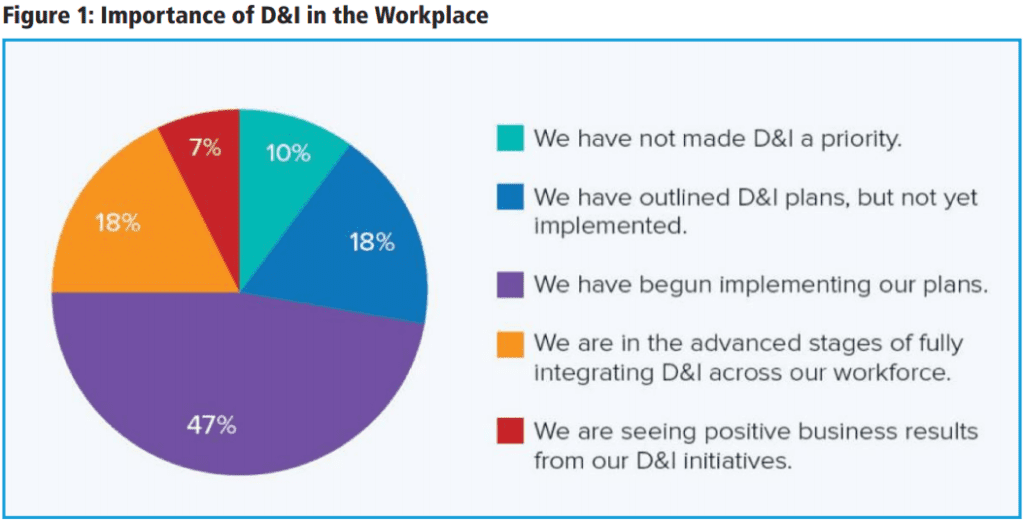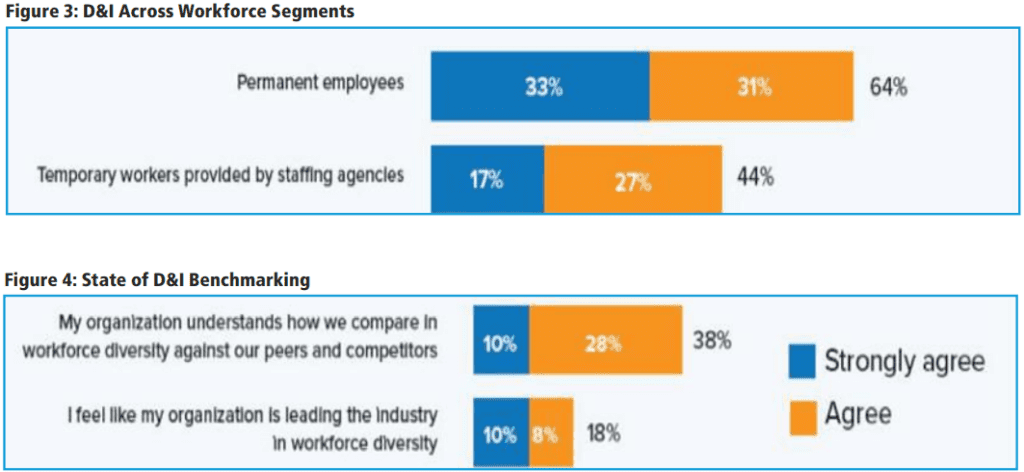New research reveals the current focus areas and challenges of D&I programs.
By Larry Basinait
As racial unrest swept the United States in 2020, more and more organizations announced initiatives aimed at promoting diversity and inclusion (D&I) within their corporate walls. Microsoft aims to double the number of Black employees in senior and leadership positions by 2025. Wells Fargo will factor diversity goals into year-end pay packages and aims to double the number of Black leaders at the bank within five years. Adidas has a goal to fill a minimum of 30% of positions with Black or Latino candidates.
New research from HRO Today, sponsored by Workforce Logiq, highlights market-driven insights around diversity in the workplace. The research reveals how companies are progressing toward their D&I goals, their key focus areas, and how they get help to become an industry leader in D&I. Five of the key takeaways from the report are below.
1. D&I is an organizational priority. The vast majority (90%) of organizations have made D&I a priority within their workforce. Almost two-thirds (65%) have begun implementing or are in the advanced stages of implementing D&I plans, while an additional 7% are much further along, seeing positive results from D&I initiatives.
2. The area of D&I where most organizations (83%) are investing is workplace and culture. This consists of celebrations and learning of different cultures in the workplace. Workforce investment, including talent acquisition, mobility, and equity in promotions, was
selected as the second most frequent investment by over three-quarters of respondents (77%). Social responsibility, including community and charity work, was selected by over one-half (54%) of respondents.
3. While workforce diversity is often factored in the selection of permanent employees (64%), it is only considered in the selection of temporary workers 44% of the time. Other sources, such as independent contractors and recruitment service partners, include workforce diversity as a selection factor much less often.
4. Specific diversity goals are common for permanent employees (71%), but few organizations have goals (16%) for their contingent workforce. All surveyed companies have transitioned contingent labor to permanent status. Nearly one-quarter (22%) transition between 25% and 49% of their contingent labor to permanent status, while another 11% transition between 10% and 24%. This means that contingent labor is a key source of full-time talent whose diversity should be considered to help drive employee representation and business performance.
5. Organizations struggle with establishing benchmarks.
Only 38% of respondents felt their organization understands how it compares against its peers and competitors in workforce diversity. Just 18% said they feel like their organization is leading the industry in workforce diversity.
To view the entire report, click here.

















